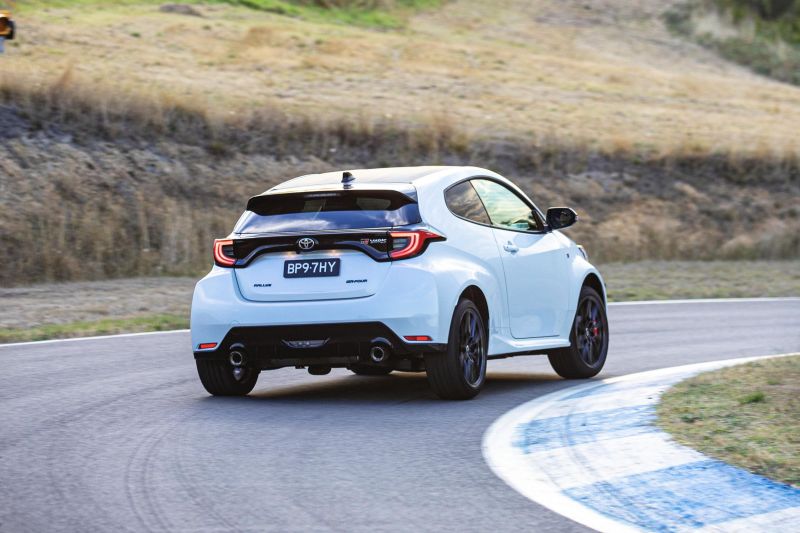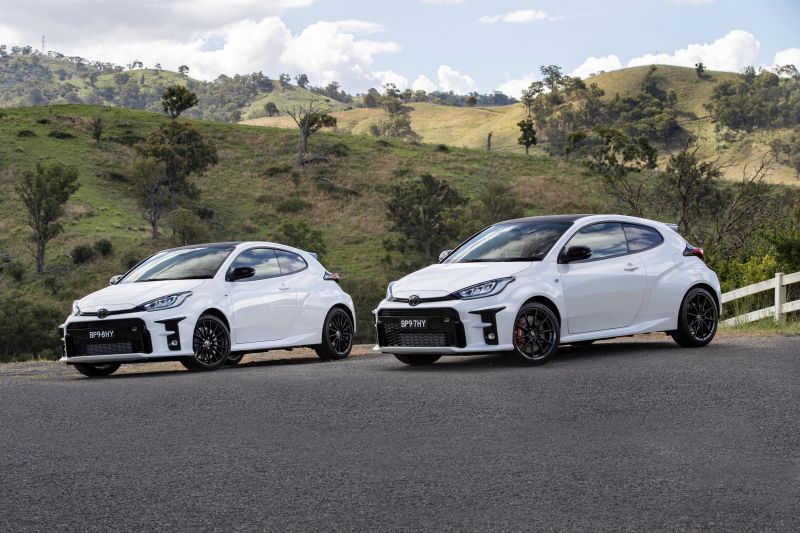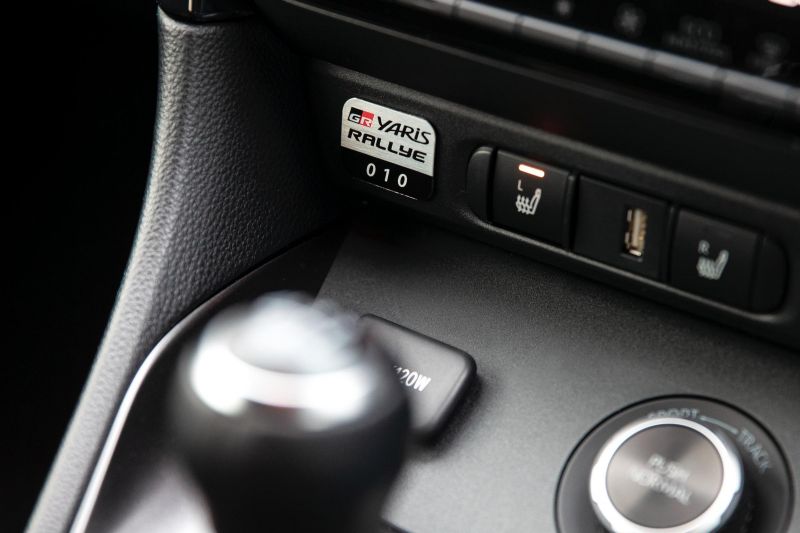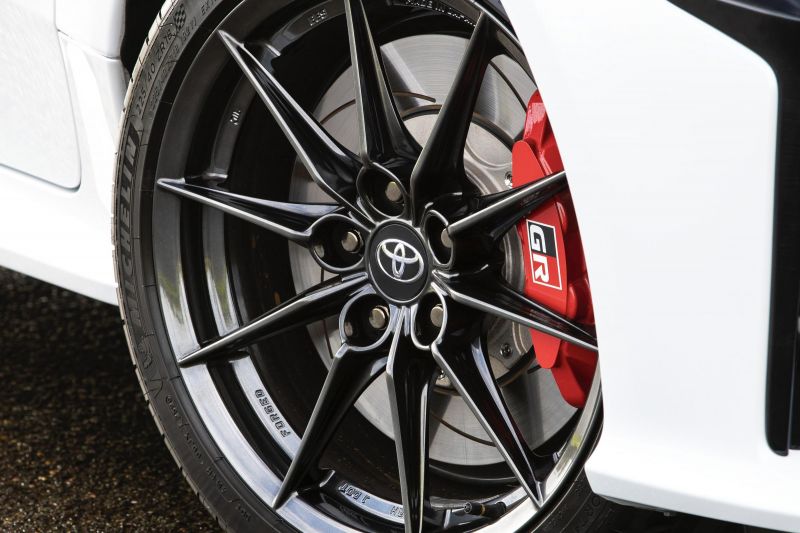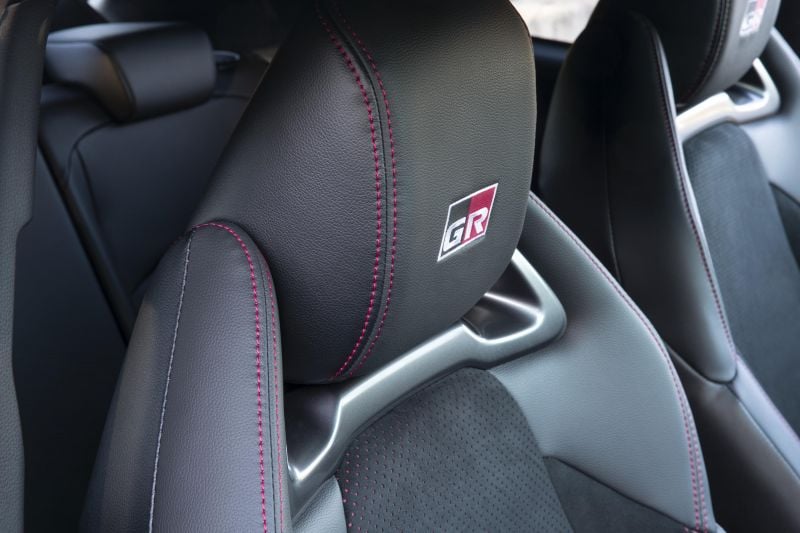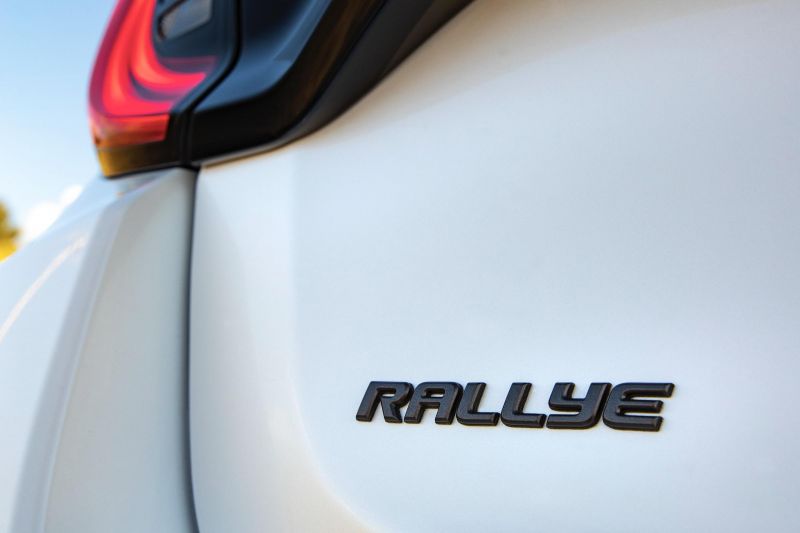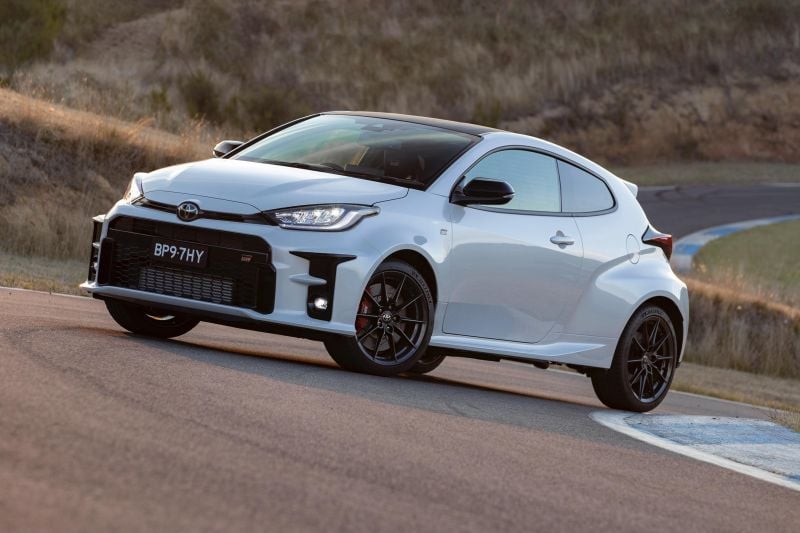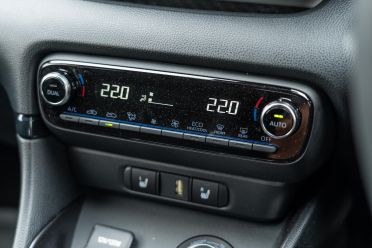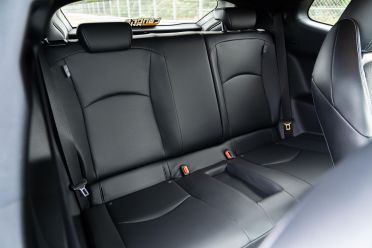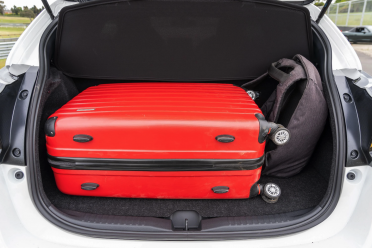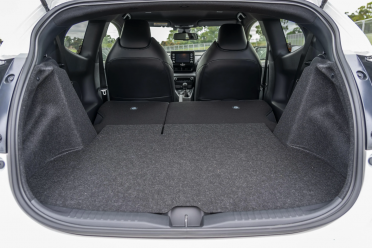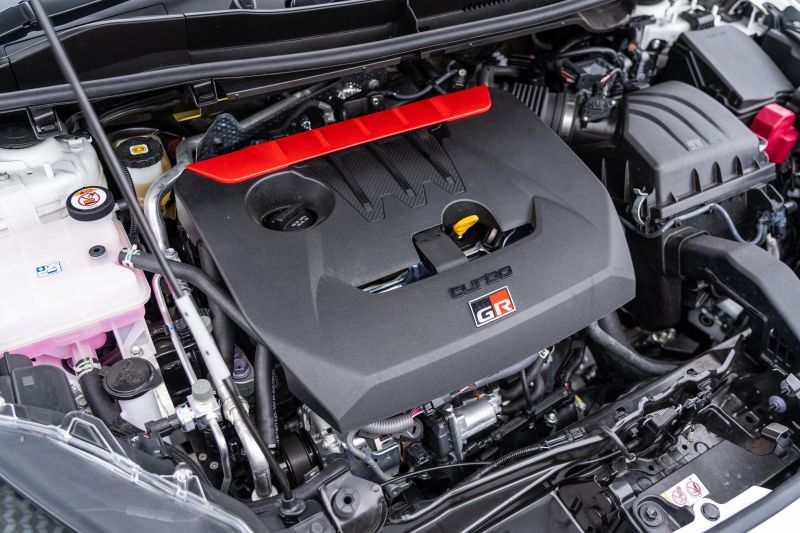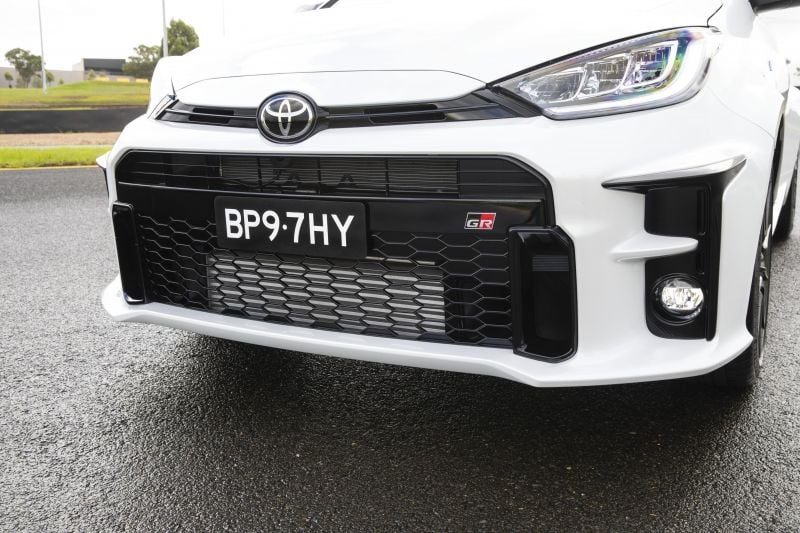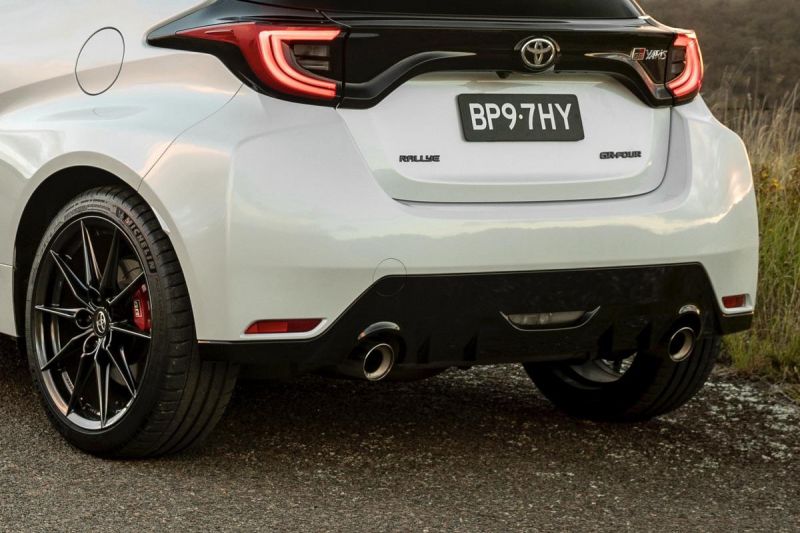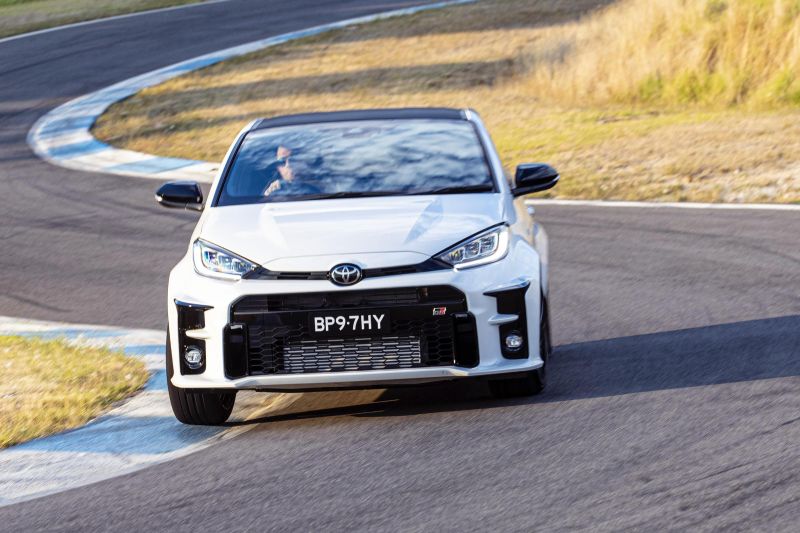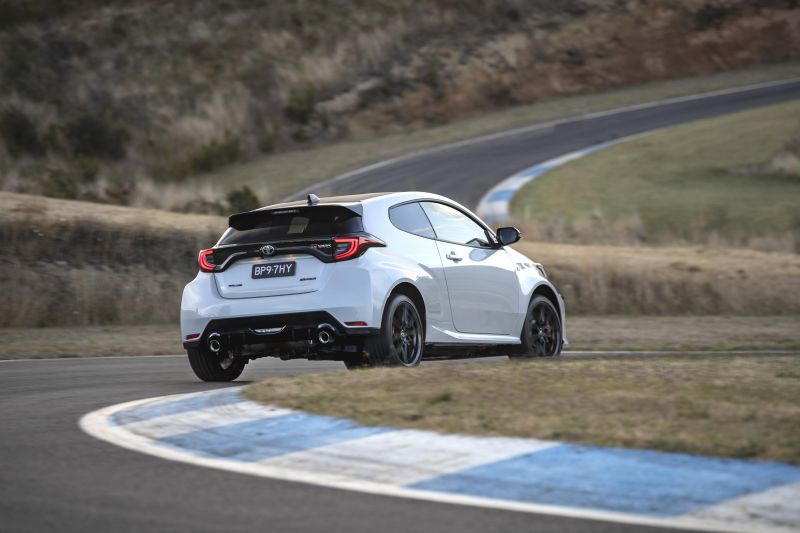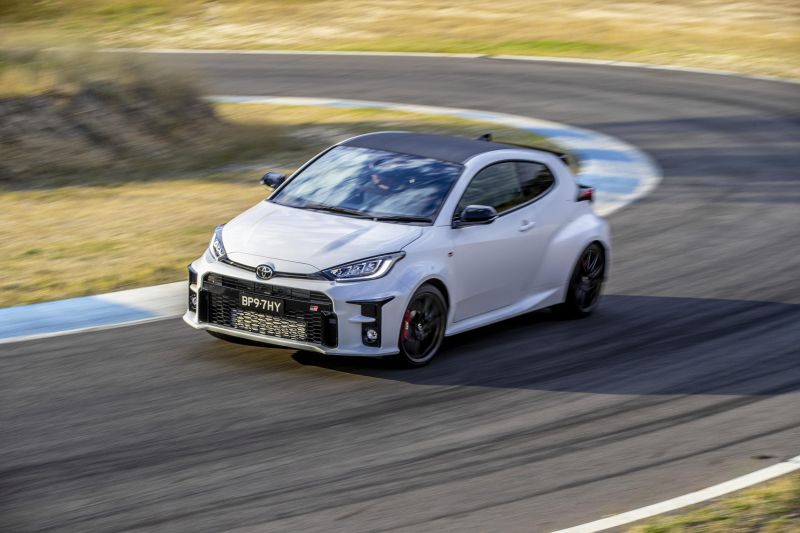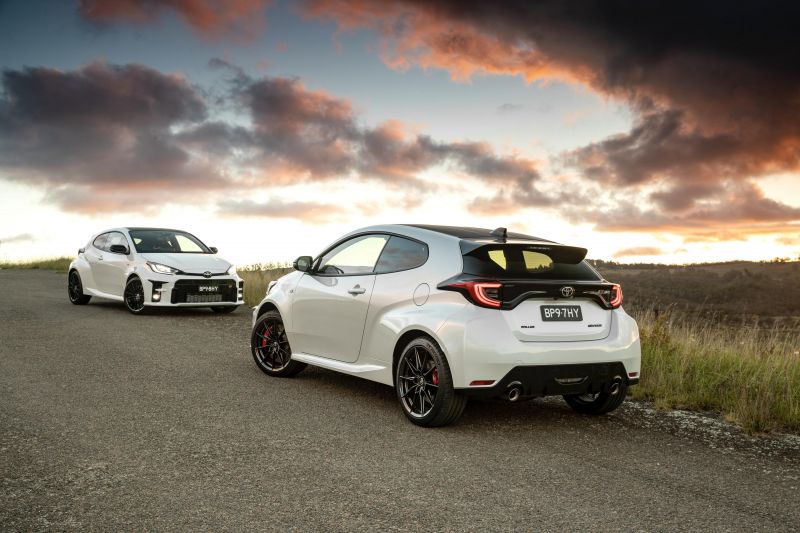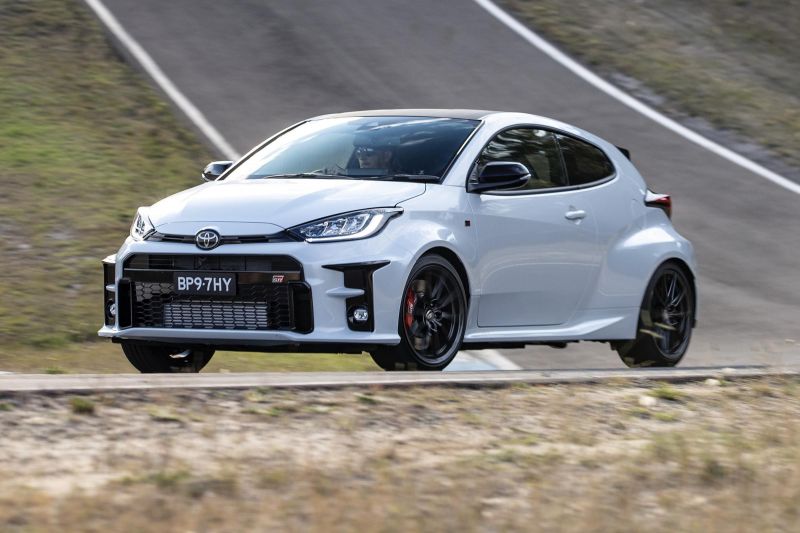The Toyota GR Yaris hot hatch has already made serious waves in the enthusiast market, belying its humble origins with circuit and stage performance that spiritually harks back to the 1999 Celica GT-Four.
That’s not to mention its sensational drive-away launch pricing that represented a saving over the recommended retail price plus on-road charges of about $14,000. Cue stampede.
This proved quite a marketing tactic to drive ‘GR’ mania. Or, as Toyota’s sales and marketing vice-president Sean Hanley told this writer at the launch: “you cannot measure the brand credibility you get from word of mouth”.
Of course for some prospective buyers this ‘base’ GR Yaris simply wouldn’t do. Which is where the GR Yaris Rallye edition steps in, ready to tear apart a circuit near you.
The Rallye builds on the regular GR Yaris by adding sticky Michelin Pilot Sport 4S tyres, BBS forged alloy wheels, stiffer “circuit-tuned” suspension, Torsen limited-slip diffs, better brake ducting, and bespoke Frosted White paint.
“The GR Yaris was originally developed as a homologation special for World Rally Championship competition, so there is no doubt about its motorsport heart,” the car-maker claims.
“But with the Rallye version, Toyota has taken that to the next level with a particular focus on sharpening the handling for customers who revel in track days or club competition.”
How much does the Toyota GR Yaris Rallye cost?
Stepping back a second, the initial 1000-strong run of ‘base’ GR Yaris models sold for $39,950 drive-away. The next 100 were sold off for $44,950 drive-away.
Anyone ordering now will pay $49,500 before on-road costs including state taxes and dealer charges.
The GR Yaris Rallye costs $54,500 plus on-road costs, though Toyota Australia sold the first 200 units for a sharper $56,200 drive-away.
So in other words, if you order a Yaris GR Rallye today then you’ll pay an extra $5000 RRP over a GR Yaris, though it’s actually the best part of twenty grand more than the very first subsidised GR Yaris models were. That ship has sailed, friends…
As we detailed here, Toyota has now sold more than 2200 GR Yaris and GR Yaris Rallyes in Australia, and hopes to have most delivered this year. Anyone who orders either variant now can expect to be waiting until well into 2022 to take delivery.
What do you get?
All GR Yaris’ come with:
Basic mechanicals
- 200kW/370Nm 1.6-litre turbocharged three-cylinder engine
- Six-speed manual gearbox with rev matching option
- Engine stop-start system
- Electronically-controlled permanent AWD system with three modes
- Two-piece ventilated front brake discs with opposed four-piston callipers
- Ventilated rear discs with opposed two-piston callipers
- Electric power steering
Outside
- Bespoke three-door body
- Carbon-fibre roof
- Aluminium bonnet, doors and hatch
- Tyre repair kit
- LED headlights, tail lights and front and rear fog lights
- Auto-folding exterior mirrors
- Rear spoiler
- Rear privacy glass
- Dual exhaust tips
- Keyless proximity entry and start
Inside
- Analogue gauges, TFT display
- Heated steering wheel
- Leather-wrapped gear stick and handbrake
- Aluminium pedals
- Soft-touch instrument panel
- Electro-chromatic rear-vision mirror
- Dual-zone automatic air-conditioning
- 7.0-inch touchscreen display
- Satellite navigation
- JBL eight-speaker audio system
- AM/FM/DAB+
- Apple CarPlay/Android Auto/Bluetooth
Above this, the GR Yaris Rallye adds:
- Front and rear Torsen limited-slip differentials
- Retuned MacPherson strut front suspension
- Retuned trailing multilink rear suspension
- Extra front brake ducting
- 18-inch BBS forged-alloy wheels
- Michelin Pilot Sport 4S tyres
- GR red brake callipers
- Frosted White crystal pearl paint
- Front seats with red stitching and perforated Ultrasuede inserts
- Uniquely numbered GR Yaris Rallye plaque
- Rallye badge on rear hatch
Is the Toyota GR Yaris Rallye safe?
The regular Yaris five-door’s class-leading ANCAP five-star 2020 rating doesn’t apply to this WRC homologation special, though that doesn’t mean it isn’t safe.
Standard safety features include:
- Autonomous emergency braking with pedestrian and daylight cyclist detection
- Daytime intersection assistance
- Emergency steering assist
- High-speed adaptive cruise control
- Lane-trace assist with steering assist and lane-centring
- Lane-departure alert with steering assist
- Speed-sign assist
- Auto high-beam
- Blind-spot monitoring
- Six airbags
- Reversing camera with guidelines
- ISOFIX anchorage points
What is the Toyota GR Yaris Rallye like on the inside?
The comments we made at the launch of the Yaris GR carry over, really.
It’s hard to get away from the fact that ultimately, it’s a small Toyota on the inside despite the WRC connotations, albeit one with some bloody good bucket seats, cool red stitching, metal pedals, and a build plate.
The instruments, touchscreen, climate control unit, and switchgear tactility and surface quality are all more reminiscent of a $30,000 city car to be honest. But then, that’s what this car really is, albeit one with a monster drivetrain.
At least the ergonomics are fine, though my 194cm frame with a racing helmet lacked headroom. This is par for the course but worth flagging anyway.
The Toyota GR Yaris isn’t a very big car, but Toyota says you can put four spare track wheels in the boot if you fold the seats down (737L). But if the rear seats are up there’s only 141L of space which is pretty squishy.
What’s under the bonnet?
The GR Yaris is powered by the world’s most powerful mass-produced three-cylinder engine. The Rallye’s unit is identical.
The 1.6-litre turbocharged powerplant generates maximum power of 200kW at 6500rpm and peak torque of 370Nm from 3000-4600rpm – giving the GR Yaris Rallye a power-to-weight ratio of 156kW per tonne.
That puts it in the same league as the Honda Civic Type R and Renault Megane R.S. – similarly priced performance hatchbacks from the size class above, albeit front-wheel drive (FWD) ones.
Toyota says it has moved the engine as close to the centre of the car as possible within the constraints of its ‘F4’ layout, and that the reason it didn’t fit a 2.0-litre engine is because the car would become too heavy.
The engine features variable valve timing, a combination of high-pressure direct injection and low-pressure port injection, and a 10.5-to-1 compression ratio.
The single-scroll ball bearing turbocharger has plus-size exhaust valves and multi-jet oil cooling to help with response, while the use of lightweight cylinder blocks with a two-level water jacket structure help cut the kilos.
The exhaust system has been designed to help the GR Yaris meet Euro 6 emission standards, yet also deliver “a rowdy sports soundtrack”. It rocks dual mufflers and circular sound baffles wrapped around the dual tailpipes. Toyota also channels the engine note into the cabin, but not artificially.
The only gearbox option is a six-speed manual, with rev-matching if you want it.
Like the GR Yaris, the Rallye uses a ‘GR-FOUR’ all-wheel drive (AWD) system with an electronically-controlled multi-plate clutch integrated with the rear differential to deliver a full time active torque split between axles.
The system offers three driver selectable modes called Normal, Sport and Track that vary the torque split. Normal is 60 per cent front biased, Sport 70 per cent rear biased, and Track splits the torque an even 50:50.
But the torque split ratios are not locked, and irrespective of the selected mode an ECU automatically adjusts torque balance in response to steering angle, throttle and brake-pedal activation, vehicle acceleration and yaw rate, and surface conditions.
Toyota cites a zero to 100km/h sprint time of 5.2 seconds and a top speed of 230km/h. Claimed combined-cycle fuel consumption (if you have the discipline not to gun it everywhere) is 7.6 litres every 100km.
How does the Toyota GR Yaris Rallye drive?
For those across the GR’s pedigree, it sits on a bespoke architecture/platform that in broad terms combines those of regular Yaris (GA-B platform) and Corolla (GA-C) models.
It’s not just a hotted-up Yaris, being 55mm longer, 110mm wider, 50mm lower, and 10mm longer between the wheels. The front and rear tracks are also 55mm and 90mm wider respectively.
Furthermore the GR’s bespoke three-door body-in-white is also 38kg lighter thanks to aluminium bonnet, tailgate, and frameless doors; a carbon-fibre roof; and polymer bumpers. Toyota even yanked 2.4kg out of the boot lining material.
While the Rallye shares its MacPherson strut (front) and trailing multi-link (rear) suspension, and big-bore dampers, with the GR Yaris, its front end comprises stiffer springs and bushes, and a thicker stabiliser bar to further flatten the body in corners.
That aforementioned active variable AWD system is aided by Rallye-exclusive Torsen LSDs on each axle designed to reactively divert engine torque to the wheel with greater traction in a given moment. This nips any wheelspin firmly in the bud.
The other piece of the puzzle are the 225/40 ZR18 Michelin Pilot Sport 4S tyres (over the standard car’s Dunlop Sport Maxx rubber), and super-strong BBS forged wheels created by compressing a single billet of solid aluminium alloy into the required shape under 8000 tonnes of pressure at 400 degrees (celsius).
The motor-assisted rack-and-pinion steering has a 12.4:1 gear ratio, 2.4 turns lock-to-lock, and the turning circle is a wieldy 11.3m.
The brake package comprises two-piece ventilated front discs measuring 356mm in diameter, with four-piston red callipers. The rear ventilated discs are 297mm and are chomped on by two-piston callipers. To put that into perspective, the front brakes on the GR Yaris are bigger than those on the Supra.
Driving the GR and GR Rallye back-to-back revealed the latter’s track friendliness.
The diffs hide driver lapses, and help make the car feel even more agile – particularly close to the limit when you’re ramping up your cornering speeds and throttle applications. The tyre-and-wheel package also adds a little more grip, helping you negotiate tight-and-twisty sections, and help steering feel.
Flick the ESC off and tackle a wet motorkhana in the GR and GR Rallye back-to-back and the latter clearly puts its power down better and tucks in with more veracity. The AWD system’s various modes also bring out different characters, with the most rear-biased Sports mode my pick.
The engine and six-speed manual work very nicely together, and thanks to the rev-matching system the need to heel-and-toe is not there – unless you prefer to do so. That said, the automated system can be caught short at times.
The best thing about the drivetrain is the paucity of turbo lag. This engine is brimming with character, and the GR puts the power down brilliantly. The raucous engine note and surprisingly potent mid-range for such a small-displacement donk is laudable.
The only potential trade-off with the Rallye versus the regular GR is the stiffer suspension, which on a road as a daily might become an irritant. It’s not unbearable but the body movements are certainly minimised.
Still, this GR Yaris Rallye takes the spectacular base car – with its angry-wasp engine, variable AWD grip and massive stoppers – and adds more tyre grip, chattier steering, superior torque distribution, and removes lingering traces of lateral body movement to boot. Lordy…
How much does the Toyota GR Yaris Rallye cost to run?
The Toyota GR Yaris costs $260 to service every six months or 10,000km for the first three years, and Toyota will warrant the car for five years and unlimited kilometres.
Track warranty coverage is a bit of a grey area, unlike Hyundai with its i30 N. We’re told the company will look at every car’s mechanical issue incurred on track on a case-by-case basis.
While we’d imagine there’d be some element of good will, a formal track warranty plan – even one contingent on you getting a full vehicle check beforehand – seems like something Toyota ought to be offering.
CarExpert’s Take on the Toyota GR Yaris Rallye
If you simply must have the best, or you reckon on doing some circuit time in your GR Yaris, then the Rallye is clearly the one with having.
Given the regular GR’s $40,000 launch pricing is no longer remotely available, the GR Rallye is now the one to have given the mild impost over the donor car, even with its stiffer road ride.
As with the normal version, a Ford Fiesta ST or Hyundai i20 N are cheaper and a Civic Type R or Megane R.S. are more practical. But the homologation-special Toyota is something a bit special.
Check out our review of the regular GR Yaris:
MORE: Toyota GR Yaris Rallye to be numbered
MORE: 2021 Toyota GR Yaris ad complaint overruled
MORE: 2021 Toyota GR Yaris Rallye pricing
MORE: Toyota GR Yaris AP4 rally car unveiled
MORE: 2021 Toyota GR Yaris price and specs
MORE: 2021 Toyota GR Yaris: First 1000 sold, price situation unclear
MORE: 2021 Toyota GR Yaris review
MORE: 2021 Toyota GR Yaris v GR Supra: Dragparison

